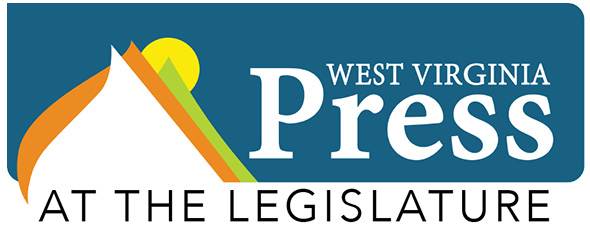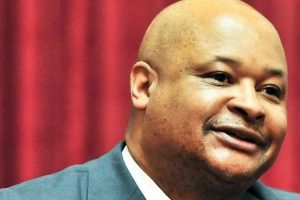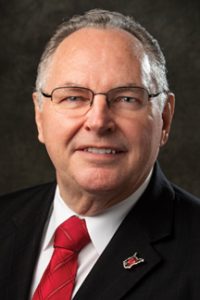Community leader wants funds used to improve housing, health, workforce, economic and social service coordination
By Autumn Shelton, WV Press Association
CHARLESTON, W.Va. – The state’s 86th Legislature has the unique opportunity to improve the state’s workforce participation rate by investing in those who will always call West Virginia home, according to the Rev. Matthew J. Watts, who testified during the Senate Workforce Committee meeting on Friday.
“You, the legislators, have the opportunity to change the trajectory of the state of West Virginia,” Watts stated, later adding, “You have the power of the purse.”
He explained that following the pandemic over $5 billion in federal funds has been given to the state, and that, in addition to federal funding, the state has also achieved a record-breaking surplus.
Watts said it is up to the legislators to decide how that money should be invested, but he believes that at least $300 million should now be directed to communities that struggle with high poverty.
“That money would have to be invested strategically in projects that improve housing, health, workforce, economic and social service coordination,” Watts said. “If we don’t do that, then we are not going to build the communities where these people live.”
During his testimony, Watts said that he is no stranger when it comes to helping the state’s residents achieve a brighter future. He serves as the pastor of Charleston’s Grace Bible Church, has the longest tenureship on the state’s Workforce Development Board, and he established the Hope Community Development Corporation, a non-profit designed to empower those who live in Charleston’s west side.
He said that through his work, he has identified eight factors that lead to the state’s low workforce participation rate – currently the lowest in the nation at 55%, while the national average sits at 62%.
Those eight factors include: The state’s older workforce, the high rate of unhealthy residents (including those with disabilities and those impacted by the opioid epidemic), high outward migration, the high number of those who have been convicted of a felony (about 125,000-150,000), the low rates of women and minorities in the workforce, the high school education crisis, the impact of the juvenile justice system, and the low rates of residents entering a school of higher education.
Although Watts said that financially investing in communities is one way to help improve future workforce outcomes, he also proposed other ideas for the Legislature’s consideration.
“A bill should be passed that no child should graduate from high school without a career plan,” Watts suggested. “How are we going to fund to send somebody to school for 14 years, and then they graduate from high school and don’t have a clue what they are going to do the next day? But, that’s what we do. There’s no requirement that a child has a career plan when they graduate from high school.”
He also suggested that the state expand summer job programs, and develop a pilot program to improve job training opportunities to at-risk youth who have either left school, aged out of a juvenile facility, or aged out of foster care.
“There are somewhere between 50,000 to 60,000 disconnected youth out of school – not working,” Watts noted. “Twenty-three percent of those have already procreated, and guess who is paying for them? We have to target that population with specific targets – trying to reconnect them to the education system through the system of WorkforceWV’s one-stop center – to get those kids reconnected, reassessed in terms of where they are to see if we can get them enrolled in some program to get a GED or high school equivalency and get them some type of job training that can lead to employment.”
Lastly, he said the state needs to focus on student scholars so they stay in West Virginia following graduation.
“Let’s create a robust internship program for all these kids that are in HSTA, Promise Scholars, Upward Bound students. Let’s try to get them connected with employers during the summer for summer internships so that they can develop brand loyalty, and, hopefully, when they graduate from college, the company will have the first opportunity to recruit them.”
Watts said that he commends the work of legislators through certain bills, like the Senate’s proposed Third Grade Success Act, and similar House Bill 2003, which, if passed, would place assistant teachers in K-3 classrooms to help improve student achievement, but he said that isn’t enough. He said that the state needs more certified reading teachers, and legislators should also focus on students who have already passed grade 3.
“Here’s the problem, we’ve got 250,000 kids in the public school system in the state of West Virginia. 225,000 of them have already passed the fourth grade. Only 25% of them are reading on grade level. What are we going to do for them?” Watts asked.
He continued that a plan needs to be in place to help all children.
“We have become a transfer portal,” Watts said of the state. “A lot of our fairest and brightest–they want out of here. They go to Morgantown and don’t unpack their bags. They go to Marshall and don’t unpack their bags. They leave. We have got to do more to get them to stay.”
“We gotta grow our own,” Watts continued. “We gotta develop the people who want to be here, and the people that are going to be here. We have to invest in them, because they have nowhere to go. They don’t need them in Detroit to put cars together. They don’t need them in Pittsburgh to work on steel. Our people aren’t needed anywhere if they don’t have skills.”
Also, during the committee meeting, Jeff Green, deputy executive director of WorkforceWV, delivered a presentation on the ways his organization is helping the state’s residents find jobs.
Green said that while the state labor force participation rate averages 55%, there is a wide range of labor force participation rates from county to county, with Monongalia having the highest workforce participation rate at 69% and Mingo County with the lowest at 31.9%.
Currently, most of the new unemployment rate claims are from the construction sector, which is not unusual during the winter, Green said.
“We are up about 700 over the number of claims submitted in November,” Green stated, adding that while the unemployment rate has “ticked up” as a result, it is nothing to worry about.
He also explained that in September, WorkforceWV contracted with Premier Virtual to create an online system to hold virtual job fairs twice a month.
“We have had a total of 786 job seekers participate in those meetings, and we have had 488 employers participate,” Green noted. “Through that process 2,261 jobs have been posted through that online forum.”
Additionally, he said that case managers are beginning to work with certain people on unemployment to create an “individualized employment plan,” and identify any barriers they may have to receiving employment.
He also said that initiatives are ongoing to help fill state positions, like those available through the Division of Highways, and to help those who have been incarcerated find employment.
In response to a question from Committee Chairman, Rollan Roberts, R-Raleigh, about initiatives used to help employ older, possibly retired residents, Green stated that he does work with the Bureau of Senior Services.
Sen. Roberts added that he would like to learn more about opportunities for the older population, and would like to hear more in a future committee meeting.
“I think we have an awful lot of opportunity there that we are missing out on of people with knowledge and work ethic and interest in staying engaged in life and not just checking out of society, so to speak,” Roberts stated.





